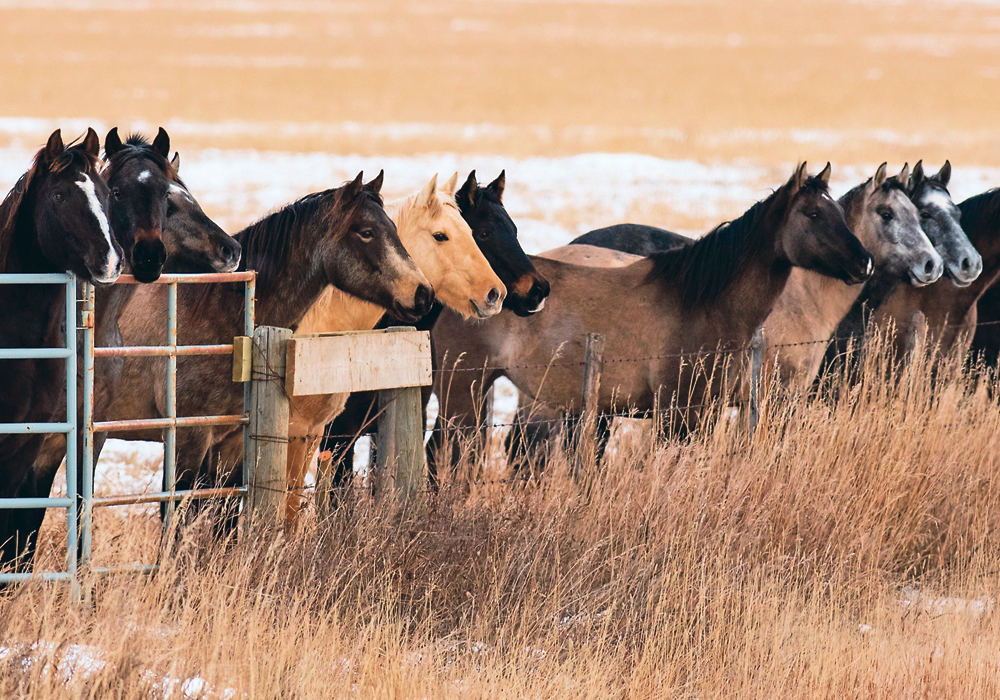OTTAWA — Laws governing animal welfare across Canada are inconsistent, a virtual patchwork quilt of legislation.
There are federal livestock provisions within the Criminal Code, transport regulations under the Health of Animals Act, regulations for federal slaughter and for transport and still other regulations for provincial slaughter and transport, to cite a few examples.
Those at the National Farmed Animal Health and Welfare Council suggest a more standardized approach would be better for livestock and better for those tasked with managing animals from birth to slaughter.
Read Also

Beef check-off collection system aligns across the country
A single and aligned check-off collection system based on where producers live makes the system equal said Chad Ross, Saskatchewan Cattle Association chair.
“Having better alignment would simplify the work of the producers and truckers and veterinarians who have to work across jurisdictions,” said David Fraser, a professor in the animal welfare program at the University of British Columbia.
“Even more importantly, having a coherent system that applies across the country would give better confidence to the people in our domestic and international market that we have a coherent system of animal welfare protection in Canada. There would be efficiencies and there would also be a benefit to the entire sector.”
As an example, Fraser said regulations at federally inspected slaughter plants differ from those at provincial slaughter plants.
If provincial regulations referenced federal regulations, “then we’d have a single set of regulations applying across the country whether the animals are in a federal plant or a provincial plant,” he said.
That example might not sit well with everyone involved in provincial plants. Some provincial regulations are less stringent than federal ones.
However, Fraser said recommendations to standardize are intended to bring greater alignment of animal protection laws to simplify the work of those involved in livestock production.
The paper giving background on the recommendations also acknowledges potential reluctance by provinces to adopt federal regulations.
“In some provinces regulators may not wish to cite national standards because they do not want to be bound by standards set by an outside body, especially if these may be revised in the future,” the paper reads.
“However, many provinces now have years of experience in citing national standards, and the trend over time has been for more provinces to adopt the approach and for none to abandon it.”
Ideally harmonization would be better for animal welfare. Fraser and others on the NFAHWC animal welfare working group suggest the national codes of practice for livestock be referenced in every province.
The codes of practice, developed through the National Farm Animal Care Council, include requirements and recommendations for the care and handling of various livestock species.
Some provinces cite the codes, or some of the codes, in their animal welfare legislation and some do not.
Most provincial animal welfare acts make it an offence to cause animals to be in distress, with exceptions if the distress is caused by an action that is a reasonable and generally accepted practice.
That would apply to such things as branding, dehorning and castration, for example.
However, the definitions of distress, as well as what is considered reasonable in terms of exemptions, differ by province.
“Our suggestion is that all the provinces clarify that it is the requirements of the codes of practice that define reasonable and generally accepted practices for the purposes of that exemption.”
Fraser said that would ensure that the same standards would apply in cases where people are charged with causing distress to animals.
The council’s committee presented eight recommendations to standardize animal welfare protection laws. First they were presented to veterinarians, then to the council as a whole, and finally to the regulatory assistant deputy ministers across Canada.
“My understanding is that the idea was very well received, but of course we all recognize that it’s going to be a long-term process,” Fraser said.
The recommendations include:
- Provinces and territories cite the same suite of codes and guidelines so the same basic standards to animal care apply.
- Provincial regulations uniformly incorporate the codes of practice.
- Provinces and territories cite federal regulations for humane animal treatment at slaughter.
- They cite federal transportation of animals regulations so a common set of standards is enforced.
- All governments consider making agreements regarding transport of animals regulations.
- Provinces and territories consider adopting tools that authorize immediate action to protect animal welfare.
- When a jurisdiction needs a new standard, it be done at a national level according to procedures like those employed by NFACC.
- Provinces and territories communicate to pursue shared definitions and common terms in animal protection law.
Detailed comparisons of provincial animal welfare laws can be found here.


















